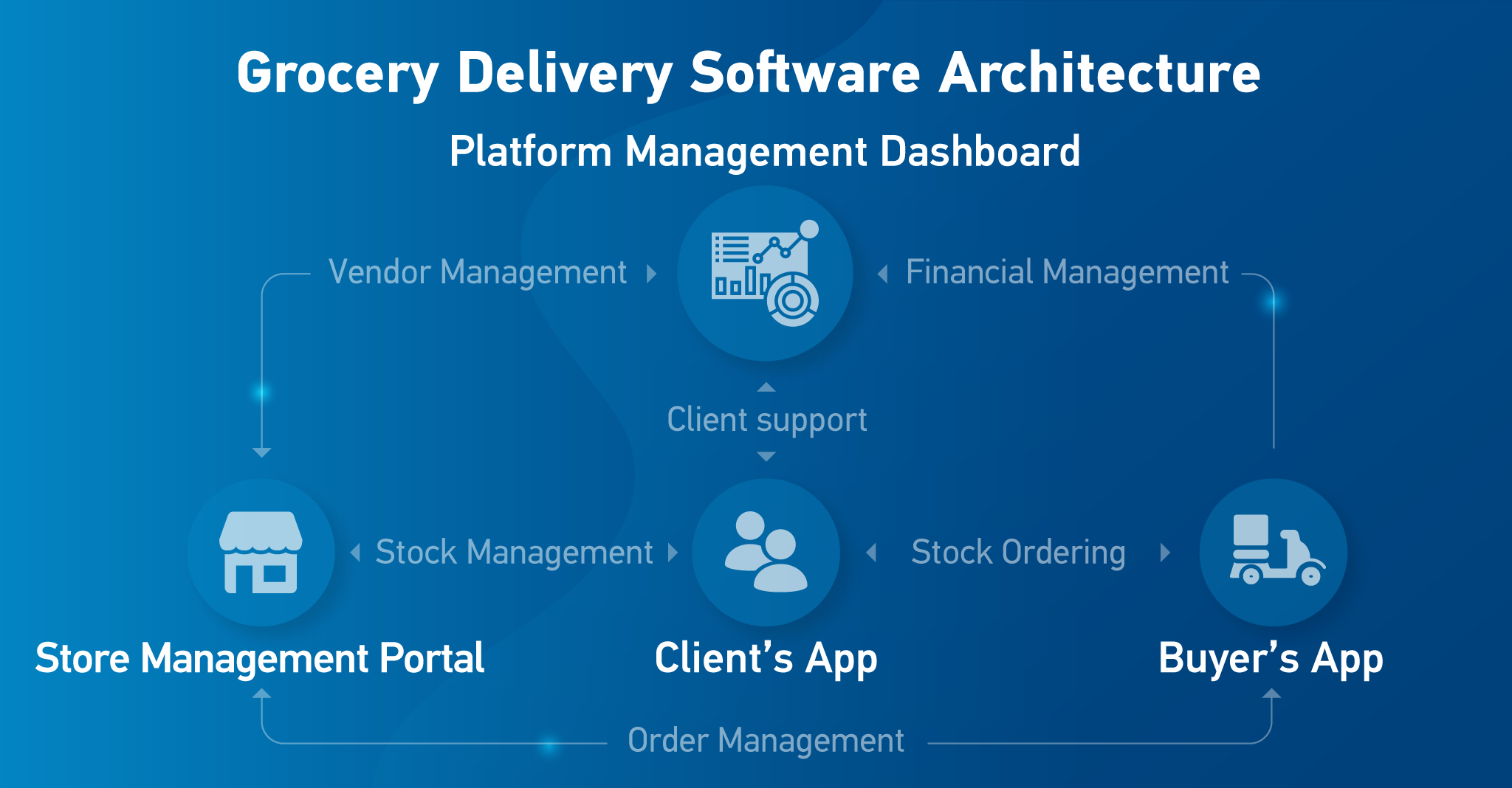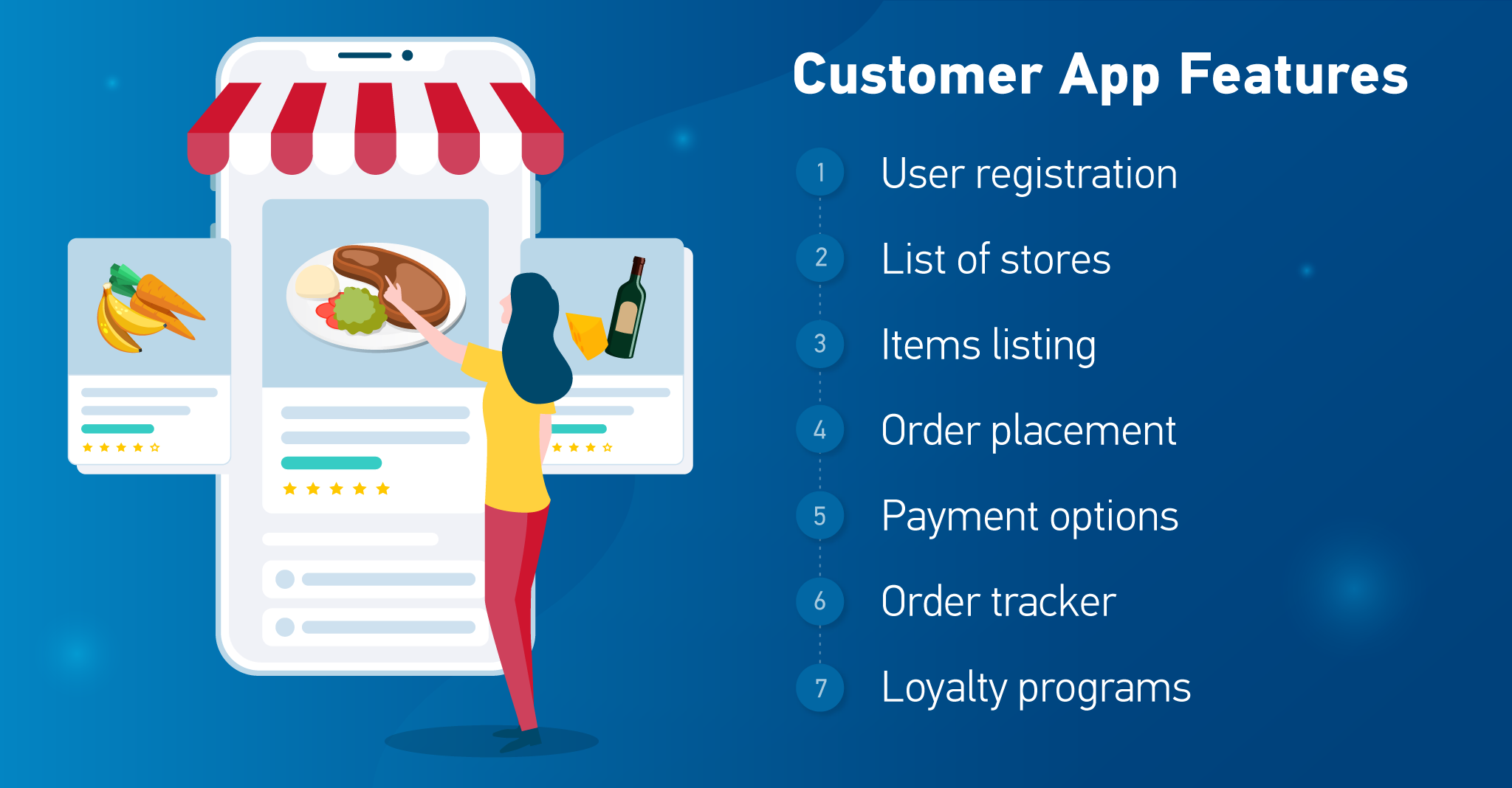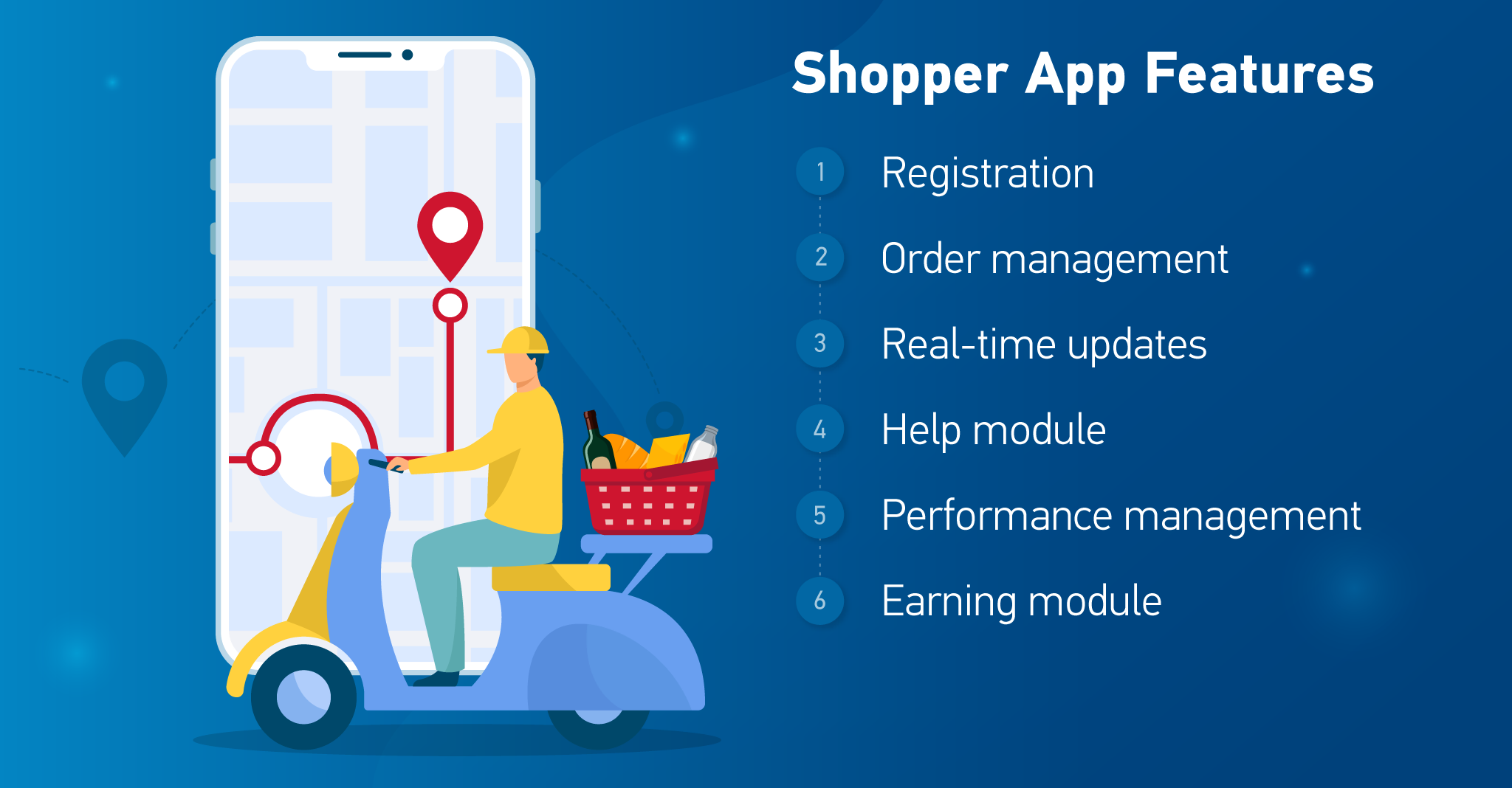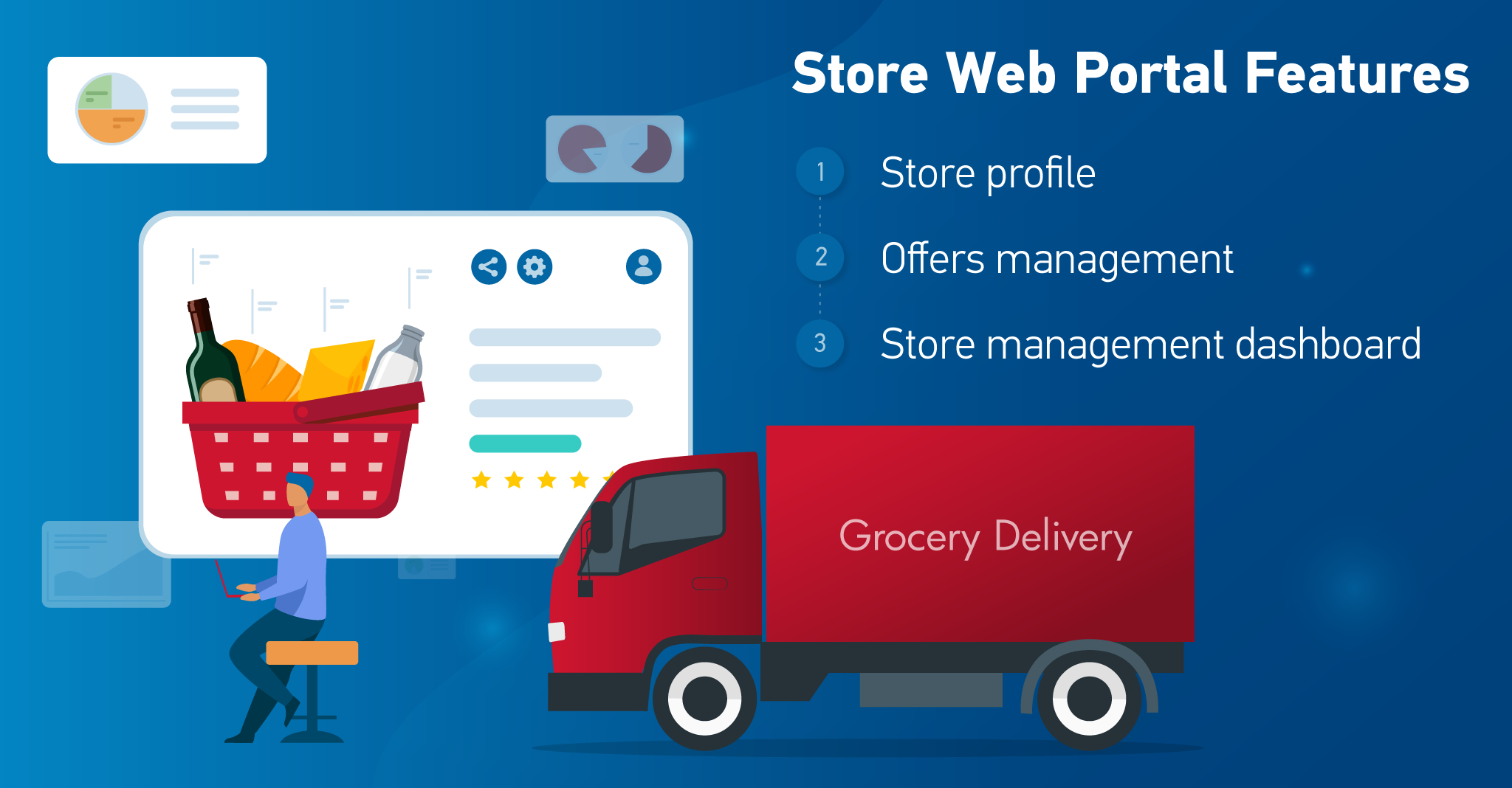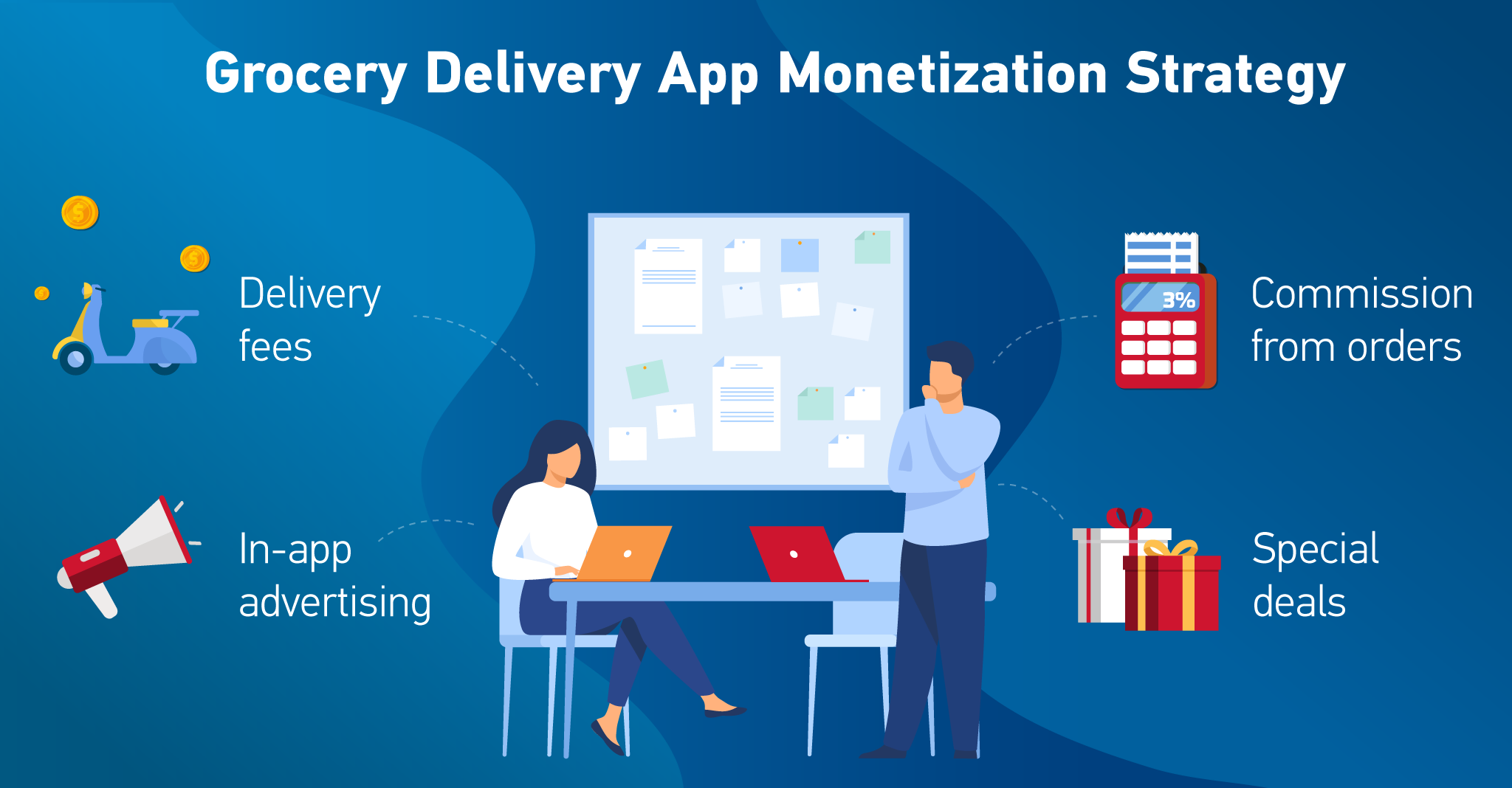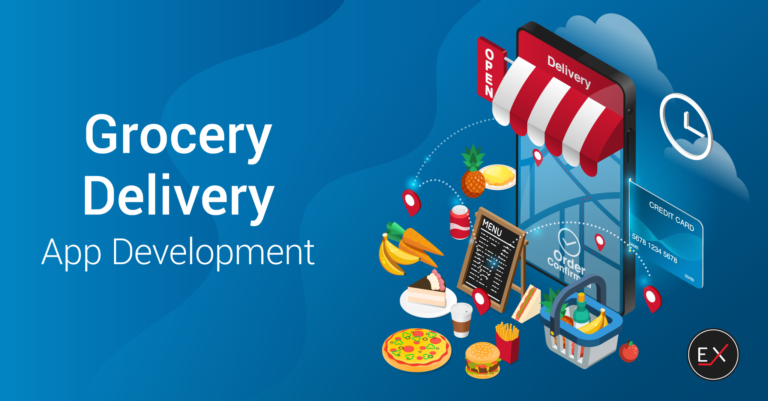
Updated: May 10, 2024
Published: September 11, 2020
Delivery services are now much in demand that’s why the grocery app development is considered among top opportunities for this business. Besides convenience, everyone has realized the absolute necessity of such services during the lockdown. Only the download of Instacart, a popular U.S. grocery delivery app, grew by 218% in March 2020.
- So how do you start the grocery app development?
- What features to include?
- How much does it cost to make a grocery delivery app like Instacart?
These and some other questions we’re going to address in this blog post.
List of the content
- How to start the grocery delivery app development?
- Grocery app development cost
- The development cost of the customer application
- The software development cost for the shopper app
- The development cost of the store web portal
- How to monetize the grocery delivery application
- In conclusion
HOW TO START GROCERY APP DEVELOPMENT?
Grocery delivery services are expanding not only in the means of popularity but also in technological approaches. Businesses start to invest in user acquisition by building their own grocery applications or/and partnering with grocery delivery platforms.
The first option is the branded application implemented for one retailer whereas deliveries are carried by the company’s staff or third-party providers. As an example, Walmart Shopping & Grocery app provides services only by involving the in-house staff whereas Publix orders are delivered by another grocery delivery aggregator Instacart.
The second business model covers the development of the grocery delivery platform that partners with numerous retailers and carries deliveries with the help of part-time or full-time shoppers. The customers can choose between multiple stores and if necessary combine items from different retailers in one order. The well-known market representatives are Instacart, Shipt.
In both cases, the development focus is on user convenience, personalized experience, and streamlining business processes. Well-planned grocery app development anticipates user needs and establishes a robust network to deliver groceries promptly. Meeting the needs of all involved parties, grocery app development starts with building separate applications for consumers, shoppers, and stores (only when developing the delivery platform).
Therefore, project complexity usually varies due to the outlined business goals. The grocery delivery platforms cover the development of three apps with all the necessary functionality to support the common workflows. Whereas the grocery app development for one retailer can be limited to the customer app and the shopper app (still optional).
Before we consider each app version cost, common features, and how it’s essential for grocery app development, it is worth noting that everything has to be implemented by applying the latest technology solutions. As long as you want to enter the online grocery delivery market, you need to ensure a presence on multiple devices including both iOS and Android. The software developers commonly work on building separate applications that are connected to the unified backend in order to support smooth integration between them. With the assistance of the professional development team, you are going to choose the technology stack to implement the initial goals. Here are some of the popular technologies chosen for grocery app development:
- Databases – MySQL, PostgreSQL, Oracle
- Back-end development – Node.js, .NET, Java, PHP
- Front-end development – React, Angular, Vue.js
- iOS development – Objective-C, Swift
- Android development – Java, Kotlin
- Hybrid mobile development – React Native or Flutter
Every technology has its pros and cons however the main requirement is to correspond to the user needs, support consistency, great performance, and reliability.
GROCERY APP DEVELOPMENT COST
Addressing the question “how much does it cost to make a grocery delivery app?”, it is important to consider the fact that the development expenses depend on several aspects. It includes applied technology stack, outlined features, grocery delivery software complexity, team composition, and development rates. As a rule, the grocery app development process starts with collecting requirements and finding the most suitable technology solutions to implement the business goals.
In the case of grocery delivery app development, the company has to meet the needs of all involved parties: customers, shoppers, and stores. Moreover, the development team will make three separate applications due to user roles while targeting their specific needs. Breaking down the list of must-have functionality could help estimate the grocery app development cost. We suggest going through those features and find out how much the company could spend on implementing it from scratch. Take into account that all the calculations are done for web and mobile development (both iOS and Android) applying the average Western European rates to hire the full team of the project manager, business analysts, developers (back-end, front-end, iOS, and Android) and QAs. So let’s find feature by feature how much it costs to build a grocery delivery app.
GROCERY APP DEVELOPMENT COST OF THE CUSTOMER APPLICATION
User registration
Simple and fast registration is something that every customer would appreciate. Enable users to create accounts within several clicks. They can either use the email address or phone number. Moreover, you can offer signup methods via social media or Google accounts. Commonly, customers provide first and last names, email addresses, set passwords, and choose the location. The last one is rather important as based on the selected area they will start their shopping experience. The average cost to implement this feature is $5 000.
List of stores
Consider the fact that even if your app partners with a number of stores in different locations, you’ll need to display stores due to the customer’s geolocation. Always try to simplify the user experience with specific filters like types of the store, service information, operating hours, delivery time, shoppers capacity, etc. The development cost starts at $10 000.
Items listing
Applying categories and subcategories division, you can present goods attractively and conveniently. Users can pick items through different departments, featured brands, items on sales, or special discounts. Besides product image and info, each item has to include the “add to cart” button and “change quantity” option. The advanced search engine is a must-have to include in the mobile app for grocery delivery thus the development could be $15 000.
Order placement
This feature covers all the necessary steps to complete the order. After the customers add items to the shopping cart, they can choose the delivery options, available time slots, payment methods, etc. Make sure to consider such cases as giving additional delivery or shopping guidance, applying the promo codes, multiple stores in one order, adding new addresses to the already saved ones, or even hiring the same shopper for repeated orders. The grocery delivery app development expenses of this feature are about $7 000.
Payment options
The grocery delivery service app has to support several payment options including cash on delivery and online payments. The order total should include items price and delivery charges if required. Always get your customers informed on any additional fees as well as allow them to apply for discounts by using promo codes or gift certificates. Payment gateways are a great solution to accept online payments and the delivery cost reaches $10 000.
Order tracker
This can be turned into advanced functionality that not only tracks the order status but enables customers to stay in contact with shoppers. For example, when users are sent automatic notifications that the shopper is ready to gather their order in the store, they can use the chat to give additional guidance, ask for the photo of picked items especially vegetables and fruits or get the replacement of missing items by agreeing to a different brand. The development price is on average $12 000 to support the great user experience.
Loyalty programs
Additional functionality that can differentiate your product on the market. Build meaningful and positive relationships with your customers, deliver exceptional service value, offer the special system of discounts, gather constant feedback, encourage customers to invite new users by free deliveries, additional promo codes or coupons. Moreover, you can come with the idea of a premium package with exclusive offers and express deliveries. This advanced feature can be developed at a $7 000 charge.
| TOTAL: | $66 000 |
| CUSTOMER APP FEATURES | DEVELOPMENT COST |
|---|---|
| USER REGISTRATION | $5 000 |
| LIST OF STORES | $10 000 |
| ITEMS LISTING | $15 000 |
| ORDER PLACEMENT | $7 000 |
| PAYMENT OPTIONS | $10 000 |
| ORDER TRACKER | $12 000 |
| LOYALTY PROGRAMS | $7 000 |
The grocery app development cost to build the customer application covering all the mentioned features could fluctuate from $60 000 to $90 000.
GROCERY DELIVERY APP COST OF THE SHOPPER APPLICATION
Registration
Since the grocery delivery platforms use services of both part-time or full-time shoppers, they not only register but actually accept new team staff. Besides general info, shoppers provide IDs with photos, valid driving licenses to get a final approval within the organization. Adding simple questionnaires can gather extra information about the selected delivery area, convenient working hours, previous experience, etc. Considering that, it may cost up to $5 000 to meet all the requirements.
Order management
The core functionality that streamlines shopping and delivery processes for the convenience of shoppers. It will be a simple process to accept the order, gather and deliver it to the customer provided that it is well handled within the grocery delivery app. For example, shoppers should receive orders based on their current location, the shopping list can be presented for separate departments or goods categories, if the item is missing they can offer the replacement in a direct chat or set the refund, share pictures of picked items or receipts, estimate the delivery time, etc. Covering the shopper needs, the feature cost could be $5 000.
Real-time updates
Sending notifications about accepting and completing the delivery is the common practice whereas you can go further with advanced real-time updates. For example, shoppers can use bar-code scanning to note each picked item whereas such info is instantly shared with the customer. Consider the functionality to add pictures on certain stages like sharing the receipt or taking the picture where the delivery is left when the customer isn’t at home. It might not be so hard to implement however requires careful planning and detailed analysis beyond the typical delivery process. The development cost is approximately estimated at $5 000.
Help module
As long as you want to deliver the value for customers, aim at the needs of other involved parties. Simplifying the shopper’s duties helps to improve the services in general. You can include advanced navigation that guides shoppers even inside the store, pointing to the needed departments and isles. It is important to support shoppers with clear and detailed instructions on each step and provide the ability to get instant help with uncommon situations. You can add about $7 000 for the grocery delivery application development of this module.
Performance management
It is obvious that the admin dashboards collect all the data on shoppers’ performance, working hours, delivery history, received feedback, etc. Though personalized management tools will be a great addition here. For instance, shoppers can set the schedule based on popular times to complete more deliveries, accept orders only in a particular area or even certain stores, receive promotions by earning points based on customer reviews. The development expenses could start at $10 000.
Earning module
That is advanced functionality that allows shoppers to track earnings e.g. hourly, daily, or weekly. Another option to add is cashing out within the shopper’s applications. It means that the earned funds can be transferred automatically to the credit card or PayPal account. It is rather convenient for both shoppers to cash out earning and app owners or retailers to manage the payroll. In order to make that module, you’ll spend about $15 000.
| TOTAL: | $47 000 |
| SHOPPER APP FEATURES | DEVELOPMENT COST |
|---|---|
| REGISTRATION | $5 000 |
| ORDER MANAGEMENT | $5 000 |
| REAL-TIME UPDATES | $5 000 |
| HELP MODULE | $7 000 |
| PERFORMANCE MANAGEMENT | $10 000 |
| EARNING MODULE | $15 000 |
The average development expenses for the shopper application is estimated at $50 000.
GROCERY DELIVERY APP DEVELOPMENT COST OF THE STORE WEB PORTAL
Store profile
Since the grocery delivery app partners with different retailers, all of them have to complete some procedures covering registration, legal business requirements, physical address verification, etc. They also fill in the general profile with information shared with customers and shoppers like offered goods and services, working hours, store location, special offers, etc. This data is commonly used to present the store for other users. The development price is estimated at about $10 000.
Offers management
Grocery stores carry out thousands of items to offer for their customers. Since it is supposed to be presented in categories, you can organize the same convenient updating for retailers. Functional UX design enables simple editing of new items and uploading pictures as well as real-time updates on availability, cost, discounts, etc. This module can be integrated with internal product management solutions to improve business processes and increase sales. The cost can vary depending on the number of integrations and start at $15 000.
Store management dashboard
Such functionality helps to keep records in one place as well as analyze data on sales, goods popularity, customer rates and preferences, and feedback of shoppers. It is a great analytical tool to anticipate business opportunities in terms of raising profits and customer reach. Beating off the market competition always requires delivering value beyond already set expectations. The company will spend about $20 000 to meet the outlined requirements.
| STORE WEB PORTAL FEATURES | DEVELOPMENT COST |
|---|---|
| STORE PROFILE | $10 000 |
| OFFERS MANAGEMENT | $15 000 |
| STORE MANAGEMENT DASHBOARD | $20 000 |
| TOTAL: | $45 000 |
Meeting all outlined requirements, the company spends on average $45 000 to build the functional store web portal.
HOW TO MONETIZE A GROCERY DELIVERY APP
It is worth noting that grocery delivery apps most of which are free at the point of use offer so many monetization opportunities. We strongly recommend considering this fact and discover a variety of methods starting from the moment you plan grocery app development. The key point to emphasize is the appropriateness of applied monetization as there is no excuse for impacting user experience negatively. It is exactly where unique user experience becomes the best approach to monetize the grocery delivery software. Let’s consider some good practices to benefit your grocery app development.
Delivery fee
Customers are normally charged a certain fee on each delivery. Its percent could depend on the order total price, distance, or even urgency. Some grocery delivery apps like Instacart offer monthly/yearly delivery plans at a fixed charge for unlimited deliveries. Also, customers can be encouraged to leave delivery tips the full amount of which goes to shoppers who carried out their orders.
Commission from orders
Since the grocery delivery service app partners with different stores and retailers, their business relationships are usually defined by commission-based revenue models. Besides agreeing on fixed rates, some of the commissions can still vary depending on brands, exclusivity, or customer reach. Another common practice is to share the promotional campaigns to inform consumers about the ability to order from certain stores. As well as your partners promote deliveries with your services.
In-app advertising
Even though apps are meant to capture an increasing amount of customers’ attention, you should definitely exclude overwhelming and unwelcome distractions. Many methods can be seamlessly integrated into your in-app content. Native ads can deliver relevant suggestions that actually improve the user experience. Such advertising via native content is perceived as just a friendly suggestion or idea. For instance, adding some items to the cart, customers receive in-app recommendations for what is frequently bought with it or the meal recipe with all the ingredients that can be added to the cart immediately.
Special deals
This is one of the best methods to monetize the grocery delivery app and build long-lasting relationships with your customers. The thing is that special deals and premium services bring extra value to the user experience. Daily deals, express delivery, coupon systems, birthday discounts are just a few examples to apply. It has to be supported by the marketing campaign of your organization and aimed at increasing user engagement with your app. It is all about building the loyal in-app community where new users also come through word-of-mouth recommendations. Many applications reward their customers with coupons or free deliveries for inviting a friend or even give the ability to go shopping in the group cart just by sharing a link for non-registered users.
IN CONCLUSION
The combination of efficient business strategies and up-to-date technologies is something that could advance your grocery app development. It empowers to establish a well-functional grocery delivery system that manages everything in one place. It is all about creating exceptional user experience with order placement, deliveries, payments, and grocery shopping in general. In their turn, businesses receive the advanced tools to carry out those services and manage daily workflows.
Have an idea on grocery app development or need professional consultation?
Don’t hesitate to contact Existek. We are an offshore software development company that has extensive experience in web and mobile development. Our team knows how to implement your ideas into a successful product.
Frequently asked questions
What is grocery app development?
Grocery app development focuses on delivering advanced solutions enabling users to shop for groceries and other products online. These apps provide a convenient platform for customers to browse, select, and purchase groceries from the comfort of their homes or on the go.
What are essential solutions to implement a grocery delivery platform?
To support common workflows for efficient grocery delivery, the platform has to include solutions such as a customer app, a shopper app, a store web portal, and a platform management dashboard.
How much does grocery app development cost?
The overall grocery app development cost covers expenses on:
Customer app - $60k+
Shopper app - $50k+
Store web portal - $45$+
How to monetize a grocery delivery application?
Some good monetization practices for grocery delivery apps include
Delivery fee
Order commissions
In-app advertising
Special deals

